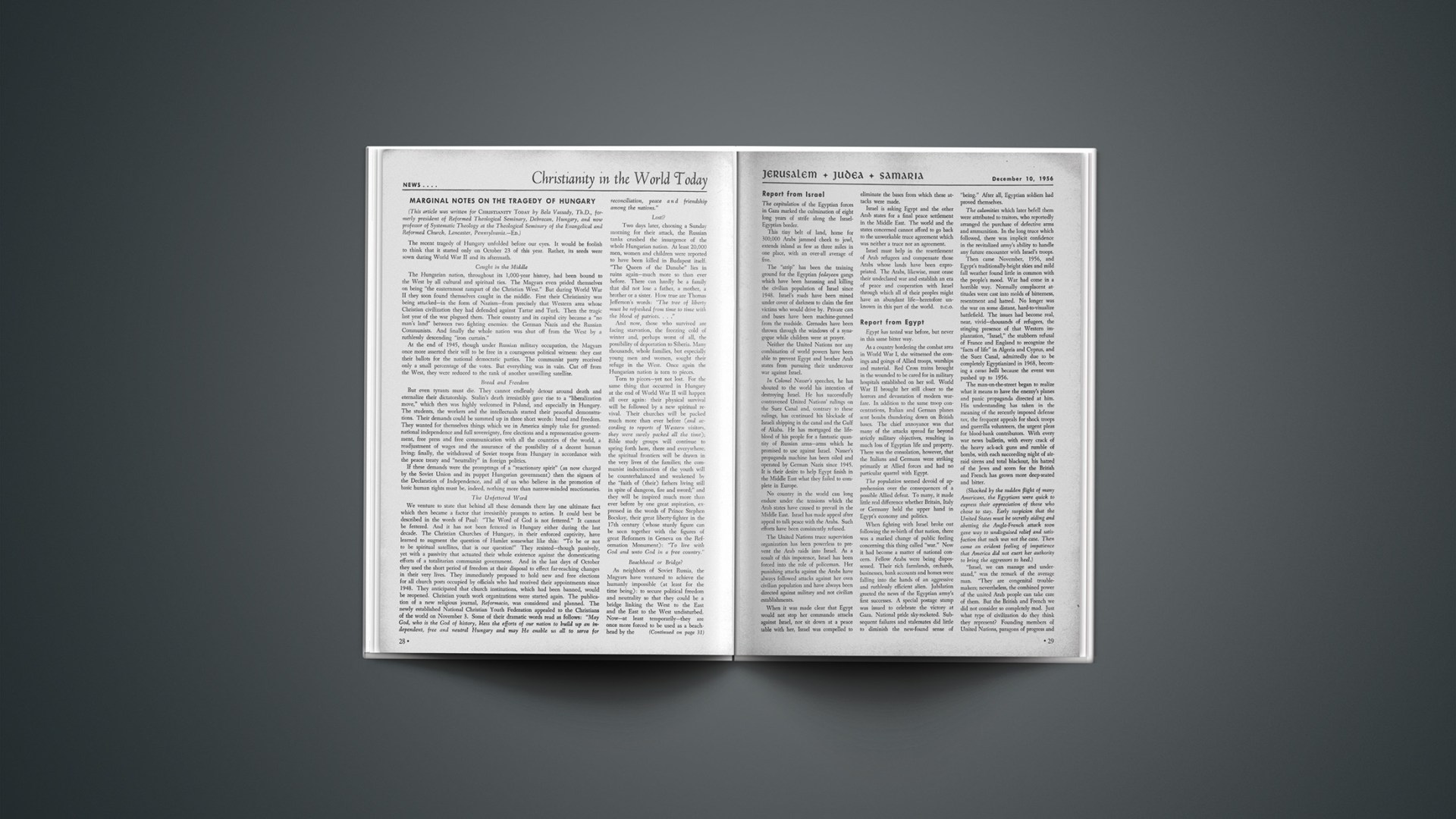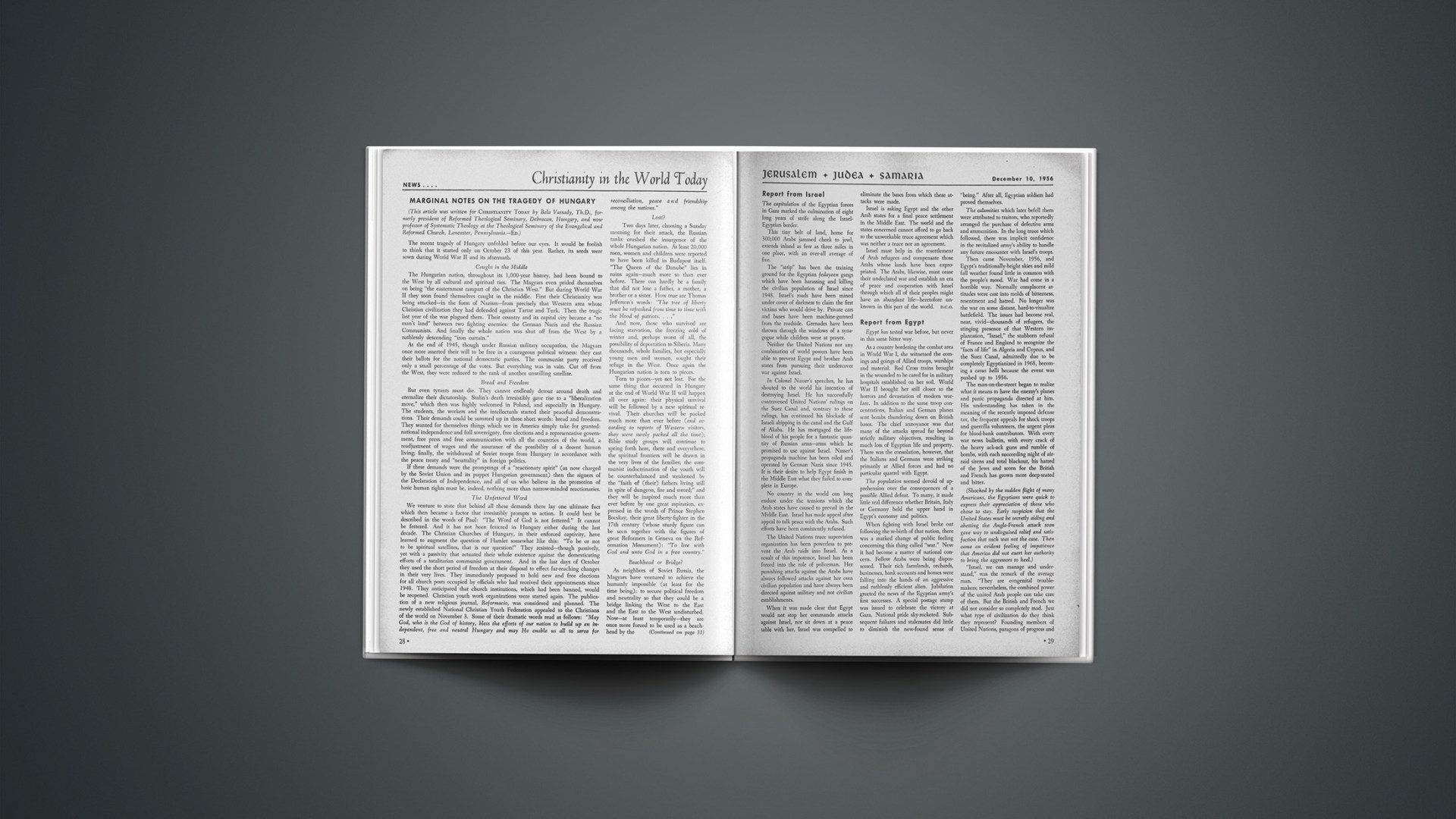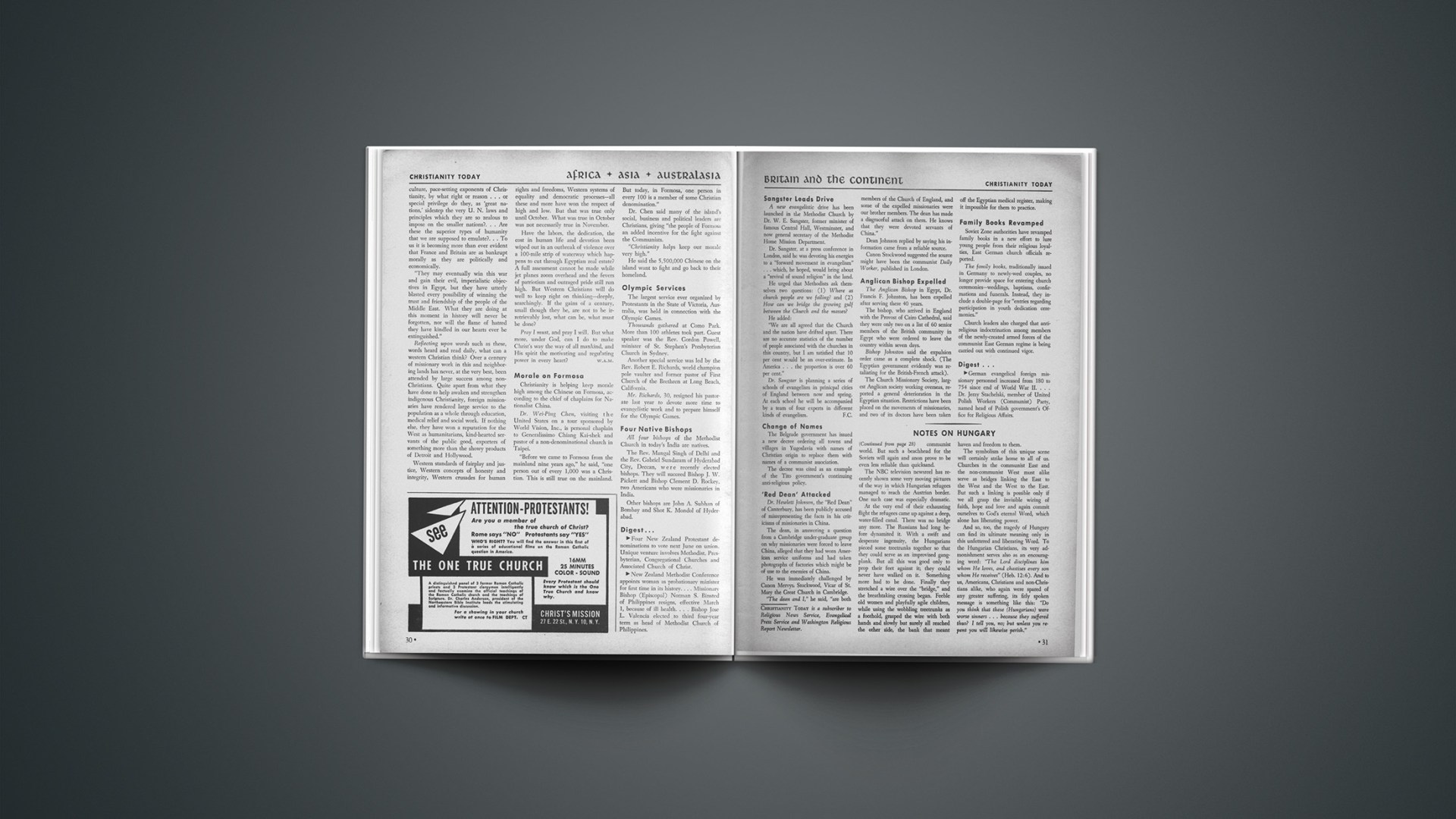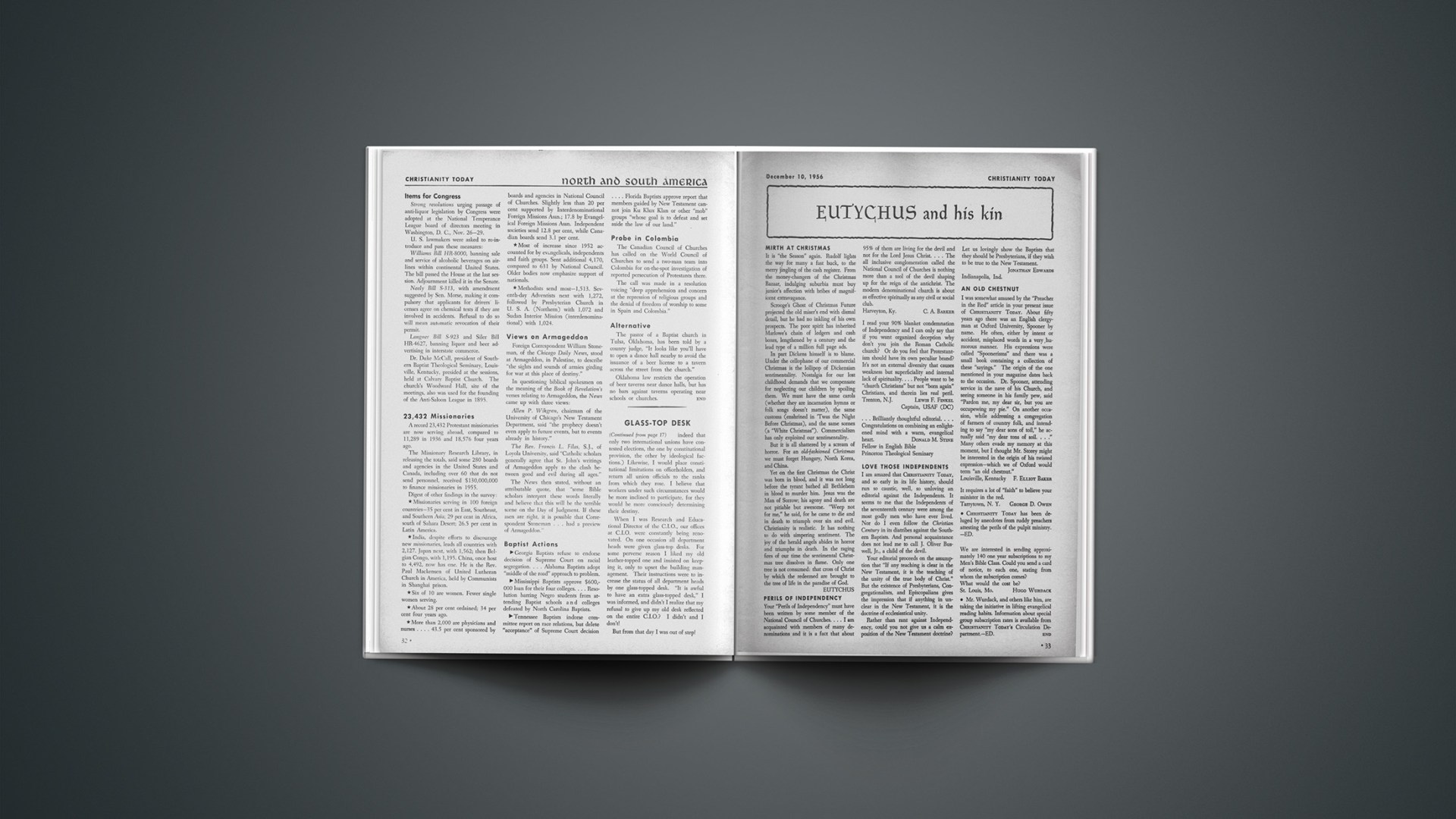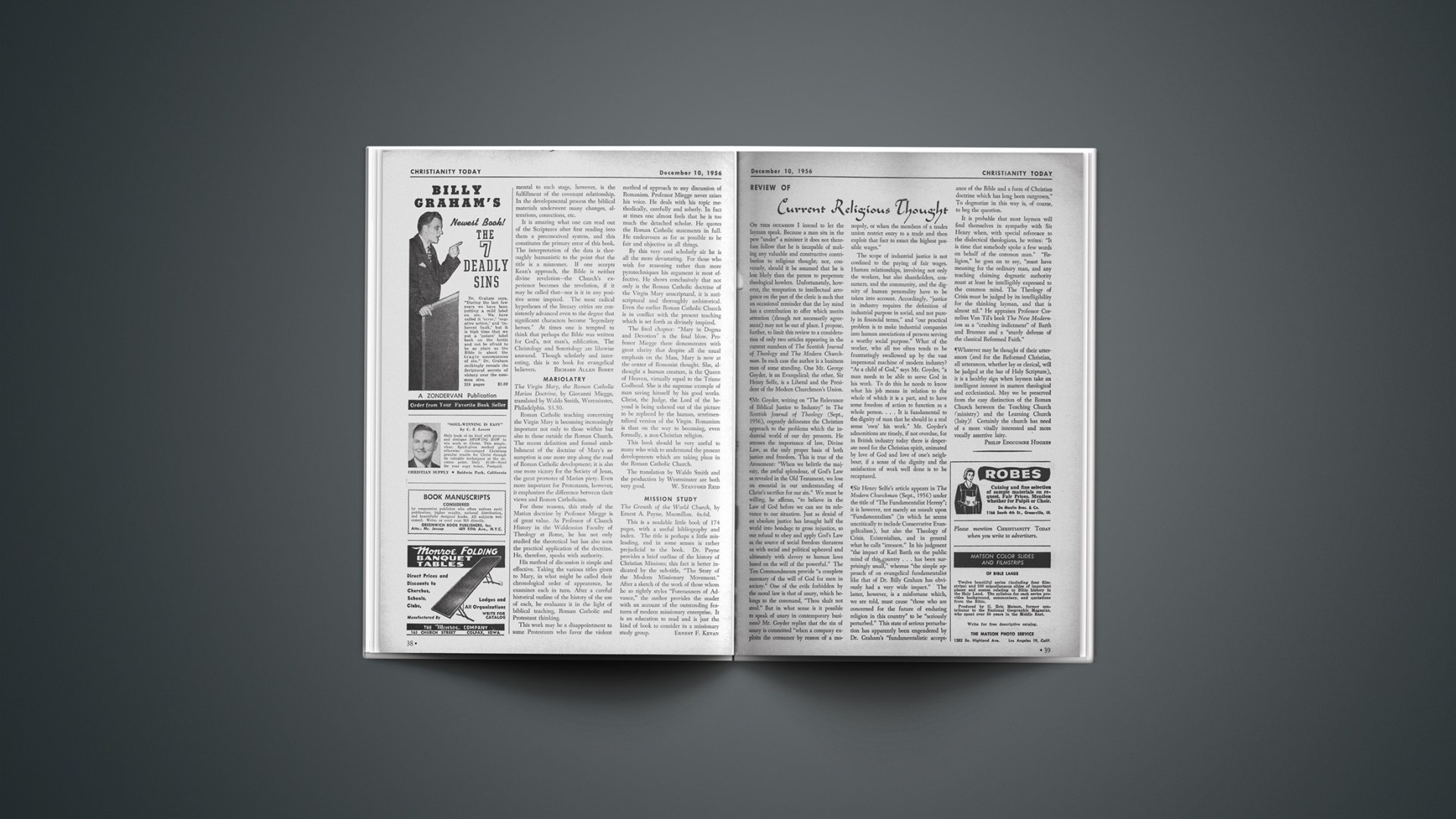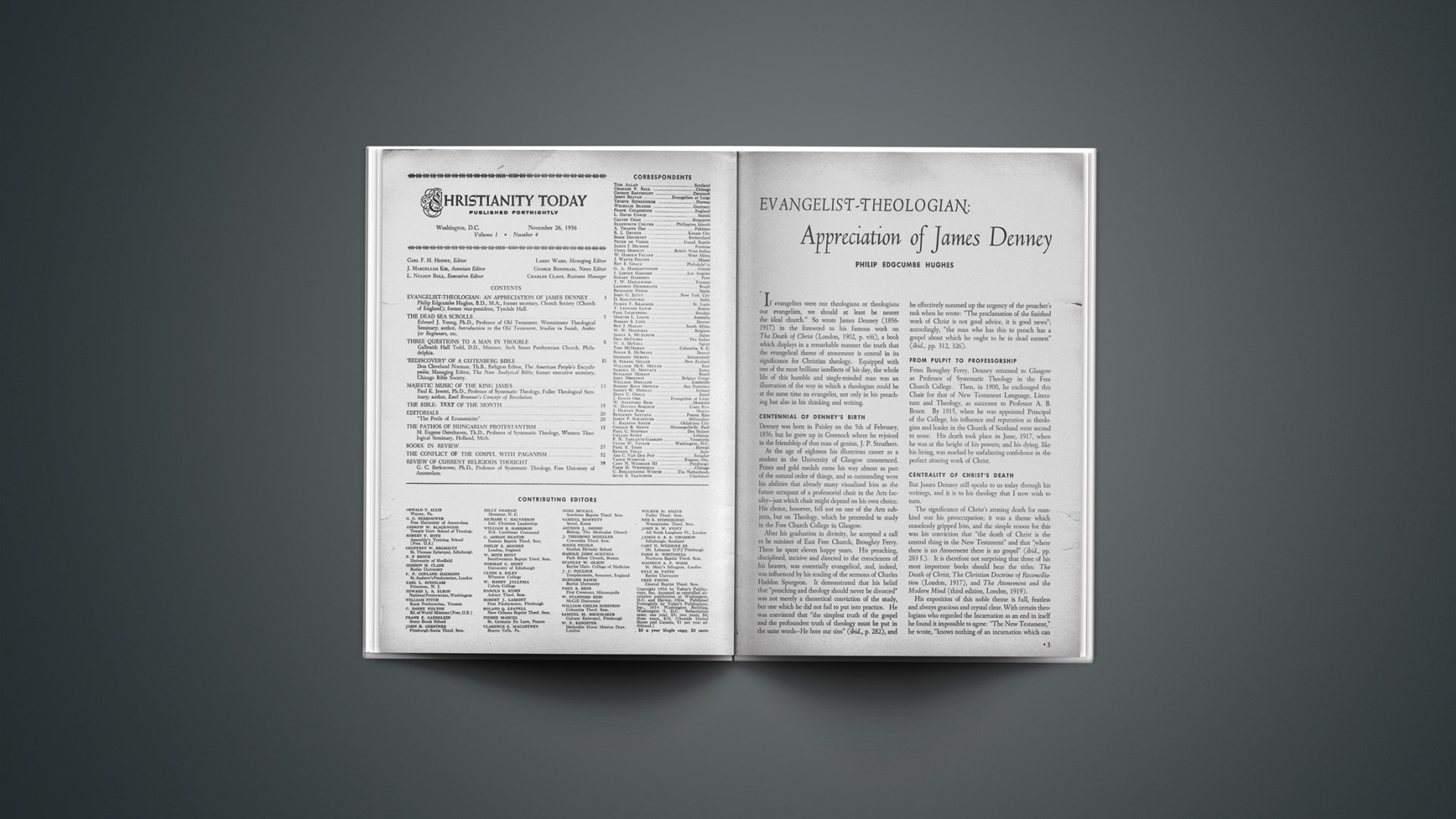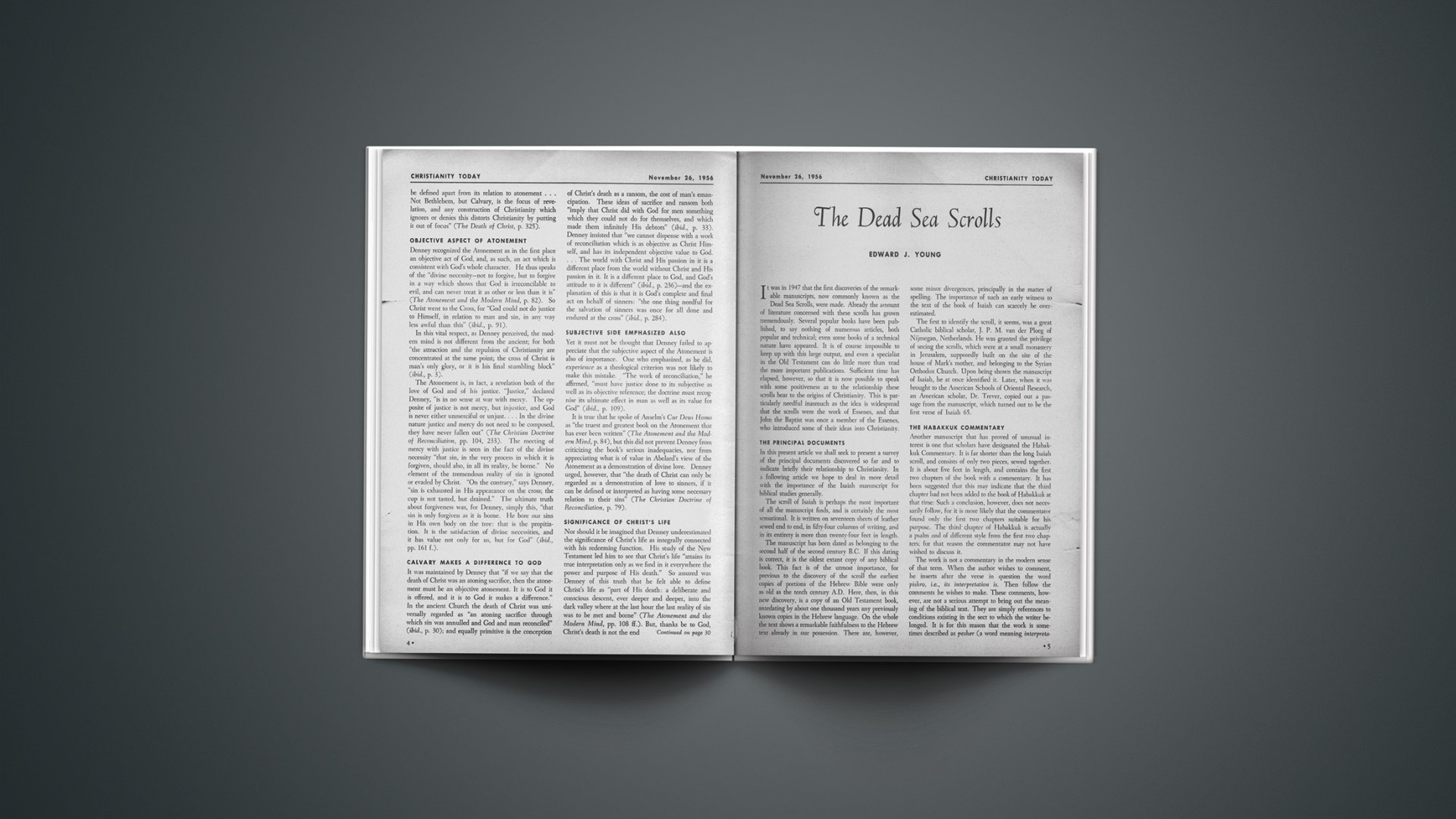(This article was written for CHRISTIANITY TODAY by Bela Vassady, Th.D., formerly president of Reformed Theological Seminary, Dehrecan, Hungary, and now professor of Systematic Theology at the Theological Seminary of the Evangelical and Reformed Church, Lancaster, Pennsylvania.—ED.)
The recent tragedy of Hungary unfolded before our eyes. It would be foolish to think that it started only on October 23 of this year. Rather, its seeds were sown during World War II and its aftermath.
Caught In The Middle
The Hungarian nation, throughout its 1,000-year history, had been bound to the West by all cultural and spiritual ties. The Magyars even prided themselves on being “the easternmost rampart of the Christian West.” But during World War II they soon found themselves caught in the middle. First their Christianity was being attacked—in the form of Nazism—from precisely that Western area whose Christian civilization they had defended against Tartar and Turk. Then the tragic last year of the war plagued them. Their country and its capital city became a “no man’s land” between two fighting enemies: the German Nazis and the Russian Communists. And finally the whole nation was shut off from the West by a ruthlessly descending “iron curtain.”
At the end of 1945, though under Russian military occupation, the Magyars once more asserted their will to be free in a courageous political witness: they cast their ballots for the national democratic parties. The communist party received only a small percentage of the votes. But everything was in vain. Cut off from the West, they were reduced to the rank of another unwilling satellite.
Bread And Freedom
But even tyrants must die. They cannot endlessly detour around death and eternalize their dictatorship. Stalin’s death irresistibly gave rise to a “liberalization move,” which then was highly welcomed in Poland, and especially in Hungary. The students, the workers and the intellectuals started their peaceful demonstrations. Their demands could be summed up in three short words: bread and freedom. They wanted for themselves things which we in America simply take for granted: national independence and full sovereignty, free elections and a representative government, free press and free communication with all the countries of the world, a readjustment of wages and the assurance of the possibility of a decent human living; finally, the withdrawal of Soviet troops from Hungary in accordance with the peace treaty and “neutrality” in foreign politics.
If these demands were the promptings of a “reactionary spirit” (as now charged by the Soviet Union and its puppet Hungarian government) then the signers of the Declaration of Independence, and all of us who believe in the promotion of basic human rights must be, indeed, nothing more than narrow-minded reactionaries.
The Unfettered Word
We venture to state that behind all these demands there lay one ultimate fact which then became a factor that irresistibly prompts to action. It could best be described in the words of Paul: “The Word of God is not fettered.” It cannot be fettered. And it has not been fettered in Hungary either during the last decade. The Christian Churches of Hungary, in their enforced captivity, have learned to augment the question of Hamlet somewhat like this: “To be or not to be spiritual satellites, that is our question!” They resisted—though passively, yet with a passivity that actuated their whole existence against the domesticating efforts of a totalitarian communist government. And in the last days of October they used the short period of freedom at their disposal to effect far-reaching changes in their very lives. They immediately proposed to hold new and free elections for all church posts occupied by officials who had received their appointments since 1948. They anticipated that church institutions, which had been banned, would be reopened. Christian youth work organizations were started again. The publication of a new religious journal, Reformacio, was considered and planned. The newly established National Christian Youth Federation appealed to the Christians of the world on November 3. Some of their dramatic words read as follows: “May God, who is the God of history, bless the efforts of our nation to build up an independent, free and neutral Hungary and may He enable us all to serve for reconciliation, peace and friendship among the nations.”
Lost!?
Two days later, choosing a Sunday morning for their attack, the Russian tanks crushed the insurgence of the whole Hungarian nation. At least 20,000 men, women and children were reported to have been killed in Budapest itself. “The Queen of the Danube” lies in ruins again—much more so than ever before. There can hardly be a family that did not lose a father, a mother, a brother or a sister. How true are Thomas Jefferson’s words: “The tree of liberty must be refreshed from time to time with the blood of patriots.…”
And now, those who survived are facing starvation, the freezing cold of winter and, perhaps worst of all, the possibility of deportation to Siberia. Many thousands, whole families, but especially young men and women, sought their refuge in the West. Once again the Hungarian nation is torn to pieces.
Torn to pieces—yet not lost. For the same thing that occurred in Hungary at the end of World War II will happen all over again: their physical survival will be followed by a new spiritual revival. Their churches will be packed much more than ever before (and according to reports of Western visitors, they were surely packed all the time); Bible study groups will continue to spring forth here, there and everywhere; the spiritual frontiers will be drawn in the very lives of the families; the communist indoctrination of the youth will be counterbalanced and weakened by the “faith of (their) fathers living still in spite of dungeon, fire and sword;” and they will be inspired much more than ever before by one great aspiration, expressed in the words of Prince Stephen Bocskay, their great liberty-fighter in the 17th century (whose sturdy figure can be seen together with the figures of great Reformers in Geneva on the Reformation Monument): “To live with God and unto God in a free country.”
Beachhead Or Bridge?
As neighbors of Soviet Russia, the Magyars have ventured to achieve the humanly impossible (at least for the time being): to secure political freedom and neutrality so that they could be a bridge linking the West to the East and the East to the West undisturbed. Now—at least temporarily—they are once more forced to be used as a beachhead by the communist world. But such a beachhead for the Soviets will again and anon prove to be even less reliable than quicksand.
The NBC television newsreel has recently shown some very moving pictures of the way in which Hungarian refugees managed to reach the Austrian border. One such case was especially dramatic.
At the very end of their exhausting flight the refugees came up against a deep, water-filled canal. There was no bridge any more. The Russians had long before dynamited it. With a swift and desperate ingenuity, the Hungarians pieced some treetrunks together so that they could serve as an improvised gangplank. But all this was good only to prop their feet against it; they could never have walked on it. Something more had to be done. Finally they stretched a wire over the “bridge,” and the breathtaking crossing began. Feeble old women and playfully agile children, while using the wobbling treetrunks as a foothold, grasped the wire with both hands and slowly but surely all reached the other side, the bank that meant haven and freedom to them.
The symbolism of this unique scene will certainly strike home to all of us. Churches in the communist East and the non-communist West must alike serve as bridges linking the East to the West and the West to the East. But such a linking is possible only if we all grasp the invisible wiring of faith, hope and love and again commit ourselves to God’s eternal Word, which alone has liberating power.
And so, too, the tragedy of Hungary can find its ultimate meaning only in this unfettered and liberating Word. To the Hungarian Christians, its very admonishment serves also as an encouraging word: “The Lord disciplines him whom He loves, and chastises every son whom He receives” (Heb. 12:6). And to us, Americans, Christians and non-Christians alike, who again were spared of any greater suffering, its fitly spoken message is something like this: “Do you think that these (Hungarians) were worse sinners … because they suffered thus? 1 tell you, no; but unless you repent you will likewise perish.”

